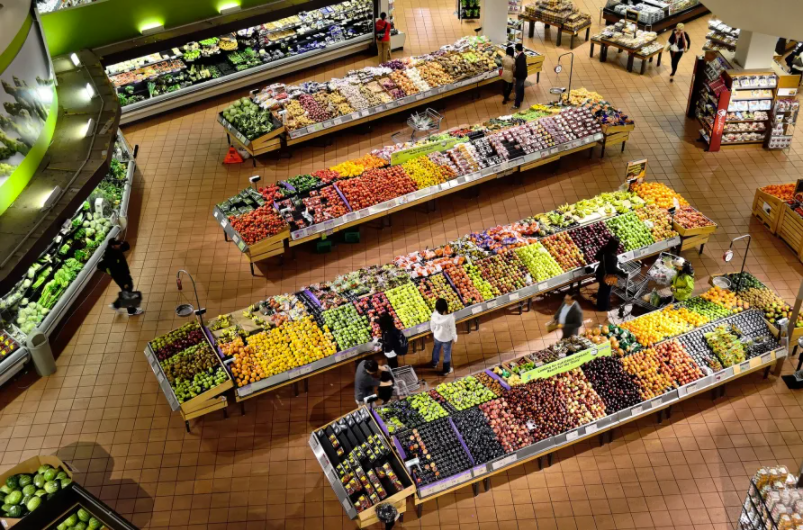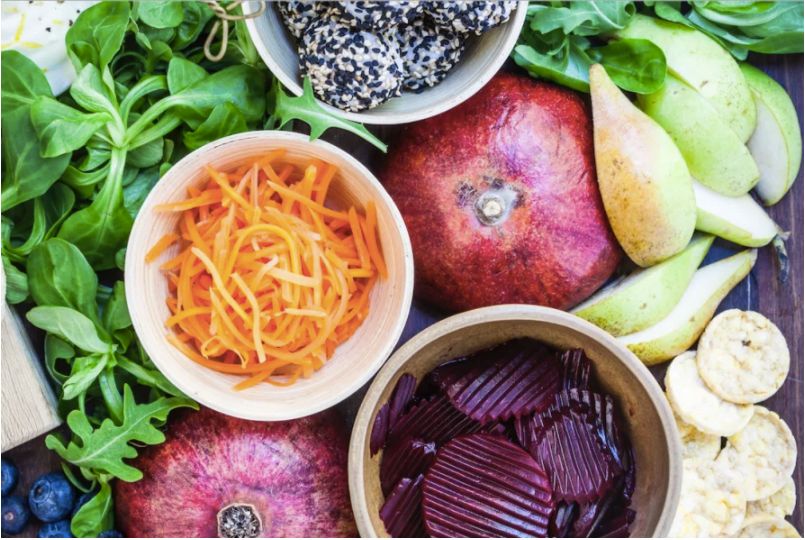Anna Wittwer, Dr Senaka Ranadheera and Simon Gardner Lee
Known as our gut microbiome, each of us has a different combination of around 1000 different bacterial species – making each microbiome as unique as our fingerprints.

Researchers are beginning to understand how these microorganisms significantly affect our health and wellbeing including impacts on mental health through the ‘gut-brain axis’.
One clear finding is that the food we eat influences the composition and function of the human gut microbiome – both positively and negatively.
Probiotics
Probiotics, the microorganisms that deliver health benefits to us when consumed alive, colonise the gut, enabling proper digestion and other essential functions of the gut microbiome.
Usually, probiotics are consumed with their carrier food products such as yoghurts or fermented foods like sauerkraut. These food products can interact with probiotics to alter their functions and effectiveness.
Since these carrier food ingredients can be produced by both organic and non-organic (also referred to as conventional) farming systems, we wanted to understand if the actual farming practice could influence the functionality of probiotics and the gut microbiome.
This information had not been thoroughly reviewed before, so the University of Melbourne’s School of Agriculture and Food approached Australian Organic Limited (AOL), the peak body for the organic industry in Australia who funded our research team to evaluate the existing scientific literature.
The findings can be accessed in the AOL’s Industry Research Series.

Organic farming is one of the fastest-growing segments in global agriculture and a 2020 survey, also commissioned by AOL and completed by the school, shows that an additional 500,000 Australian households bought organic products over the past 12 months, primarily due to environmental and health considerations.
However, the published literature lacks strong evidence that organic foods are significantly more nutritious than non-organic foods overall, so this field is in need of further research.
Focusing on studies published between 2010 and 2020, six different food categories were selected for our review including dairy, cereals and grains, fruits and vegetables, meat, wine and fermented foods.
Fruit and vegetables
Although the exact nature of the nutritional effect was found to vary between and within these food categories, organic farming practices appear to have an effect on some of the nutritional content of foods (as discussed in more detail below).
For example, although the amounts weren’t significant, organic fruits and vegetables tended to contain similar or higher levels of phenolic compounds than non-organic.
Phenolic compounds are of interest as potential protective factors against cancer and heart diseases. Their beneficial effects on obesity, diabetes and neurodegenerative diseases, potentially due to their antioxidant and anti-inflammatory effects, are also reported in the literature.

These appear to be due to their bioactive metabolites, the resultant products after digestion, as well as their role as beneficial prebiotics; providing the food for probiotics and gut microbiota, and expressing antimicrobial properties against pathogenic gut microbiota.
Meat, wine and milk
Nutritional differences can also be seen in meat and milk when comparing organic and non-organic farming.
For example, there are beneficial differences in the fatty acid profile in organic milk when compared to non-organic milk. Fat-soluble vitamins including vitamin A and E are higher while overall fat content seemed to be lower in organic milk as well.
But only a few studies focus on these nutritional differences and their impact on gut microbiota. Take iron as an example – higher levels of iron (Fe) can promote the growth of pathogenic microorganisms in the gut while an iron deficiency can lead to reduced amounts of beneficial compounds produced by gut microbiota.
Our review found variability in mineral nutritional composition in meat, wine and milk when comparing the different production systems.
One study showed that organic pork tended to contain similar (magnesium, calcium, iron, nickel) or higher (chromium, copper, manganese) levels of macro and trace elements than non-organic pork, and organic wine contained higher levels of nickel, but organic milk had similar or lower levels of minerals.

At this stage, we do not know if these differences in mineral and other nutritional compositions in organic or non-organic foods affect the functionality of gut microbiota and we need more research in this area.
Grains and cereals
In grains and cereals, organic farming practices seemed to alter carbohydrate composition, with more fibre and total carbohydrate found, but no significant difference in nutritional content.
Previous studies have shown that fibre supports the growth of probiotic Lactobacillus and Bifidobacterium species, and is shown to beneficially alter the composition of metabolites produced by gut microbiota.
Both total carbohydrate intake and the proportions of different types of carbohydrates eaten are associated with alterations to the gut microbiota. But the influence of organic or non-organic grains and cereals is still unknown.
Also, in cereals as well as in fresh produce, a product’s nutrient profile often depends on cultivar or crop variety as much as or more than agronomic practices, and these factors should be considered in future studies.
Fermented foods
Finally, kimchi, which is made with organic radish, had more beneficial microorganisms than kimchi made with non-organic radish, and therefore may have a potentially positive impact on the gut microbiome.

Previous research has also shown that consumption of organic foods may also reduce exposure to pesticide residues and some antibiotic-resistant bacteria, having a positive influence on the gut microbiome and probiotics.
Overall, our review of current literature did find that some organic foods may be higher in some factors that benefit the gut microbiome, but the degree of these positive effects is not certain given the limited number of studies were undertaken to date.
We clearly need further studies to verify these phenomena.
In the meantime, one of the best things we can all do to support the trillions of microorganisms in our gut is to eat a variety of low-processed and high fibre foods, particularly fresh fruits and vegetables.
This article was first published on Pursuit. The original article is here.
Do you always try to buy organic fruit and vegies? Are you convinced that organic is better? Why not share your views in the comments section below?


Grow your own fruit and veges. One does not need a large space and many can be grown in pots or against a wall. Use compost you have made yourself and do not use any chemicals or pesticides. Best fruit and veges ever.
When the research is funded by organic producers, it’s hardly to say it’s impartial.
it not always the nutrition people are concerned with as they both have similar profiles. its the herbicides and pesticides that they use that are toxic to humans, and cause a vast array of illness, typically like heavy metals that build up over time. and washing your fruit and vegetables (like they suggest you do) doesnt remove them.
https://www.ewg.org/foodnews/summary.php
It is impossible to draw simple conclusions about the differences between organic and normal foods. An easy point is that whilst some vegetables and fruits are regarded as higher in specific minerals, these minerals can only be present in the food at the point of sale if those minerals are present in the soils where the original growth took place.
And as any agronomist can tell us, soils ain’t soils. Across this country we have what are apparently very fertile soils but actually nutrient poor ranging to good enough to eat straight from the paddock.
Similarly different strains of wheat have different nutrient profiles even when grown in the same paddocks.
Comparing organic milk to ordinary milk is only a valid comparison if the respective herds were of the same breed of cows. Ask any cheese or specialty butter maker about which breeds they prefer to source their milks from for optimum results.
Once the minerals have been taken from the soil, they are gone unless where they went is returned there. As our bodies are built with trace elements of almost every element in the Periodic Table, to restore our fields to full nutrient level, that’s where our bodies would need to be interred (and not six feet down as a traditional resting place. There’ll be no resting in piece for many, though if our dearly departed have been cremated, an appropriate destination for those ashes may be spread across our market gardens and paddocks).
We may get what we want from buying “organic” as the placebo effect can be very strong in all matters. It is worth what we want it to be.